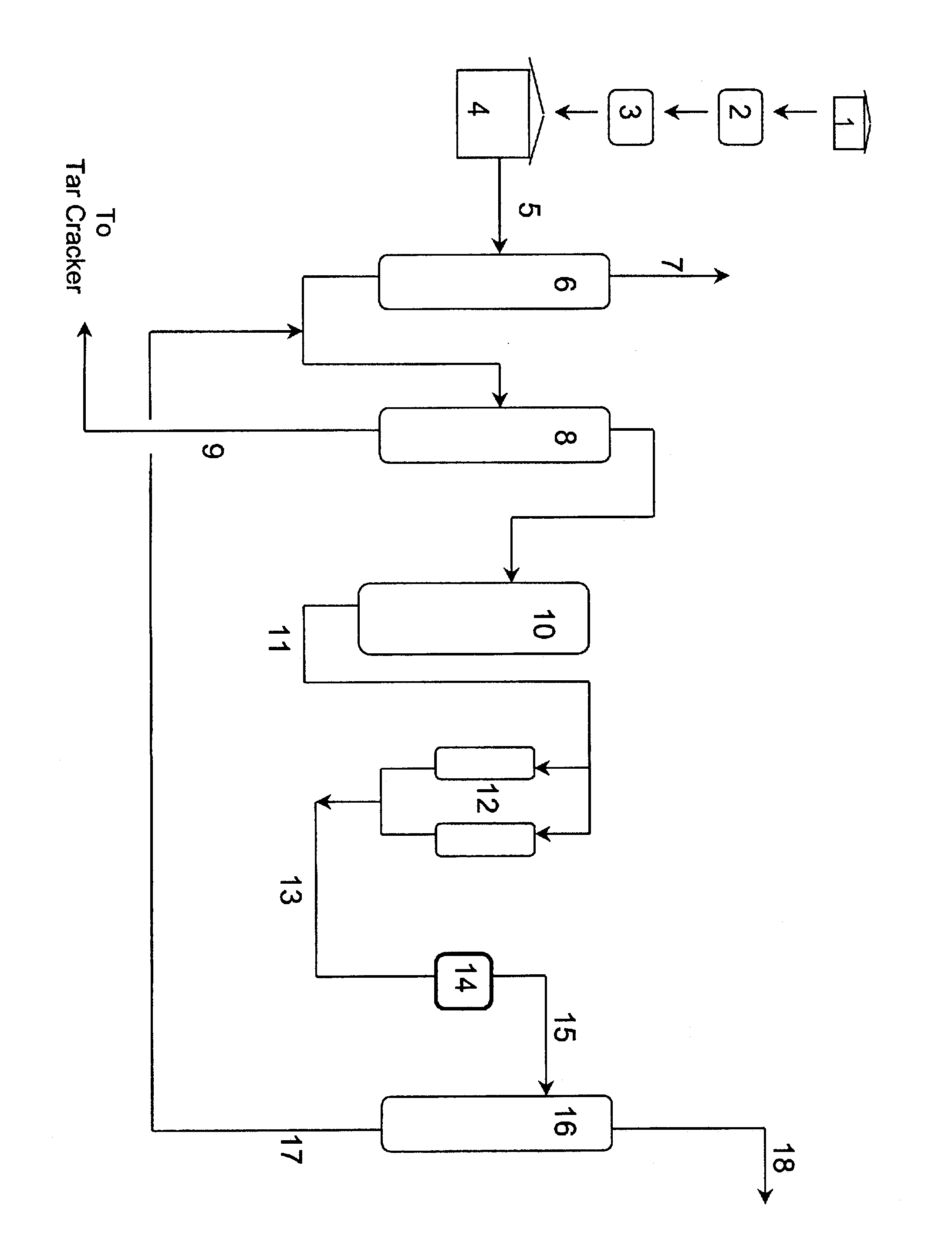Production and purification of phenol
a technology of phenol and purification method, which is applied in the direction of evaporation, other chemical processes, separation processes, etc., can solve the problems of contaminating the effluent phenol stream, difficult to remove impurities, and unsuitable critical end use applications quality
- Summary
- Abstract
- Description
- Claims
- Application Information
AI Technical Summary
Benefits of technology
Problems solved by technology
Method used
Image
Examples
example 2
The IER treated effluent phenol stream as prepared and used in Example 1, but this time containing 105 ppm sulfonic acid oligomers, was passed through an HTM adsorbent bed 14 composed of Sasol PuralMg 70 material. Temperature was maintained at 140.degree. C. The oligomer content of the effluent anion bed treated stream 15 was measured at hourly intervals using the titrimetric method. No sulfonic acid oligomers were detected in the effluent stream showing 100% effectiveness.
example 3
The IER treated effluent phenol stream as prepared and used in Example 1, but this time containing 75 ppm sulfonic acid oligomers, was passed through an anion adsorbent bed 14 containing SudChemie T-2647 HTM in tablet form. This material contained 35 wt % MgO HTM on an inert binder. Temperature was maintained at 130.degree. C. and the anion bed effluent 15 was tested titrimetrically as in Example 1. No acidic oligomers were detected showing 100% effectiveness.
PUM
| Property | Measurement | Unit |
|---|---|---|
| operating temperatures | aaaaa | aaaaa |
| temperature | aaaaa | aaaaa |
| particle size | aaaaa | aaaaa |
Abstract
Description
Claims
Application Information
 Login to View More
Login to View More - R&D
- Intellectual Property
- Life Sciences
- Materials
- Tech Scout
- Unparalleled Data Quality
- Higher Quality Content
- 60% Fewer Hallucinations
Browse by: Latest US Patents, China's latest patents, Technical Efficacy Thesaurus, Application Domain, Technology Topic, Popular Technical Reports.
© 2025 PatSnap. All rights reserved.Legal|Privacy policy|Modern Slavery Act Transparency Statement|Sitemap|About US| Contact US: help@patsnap.com

